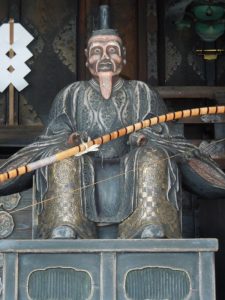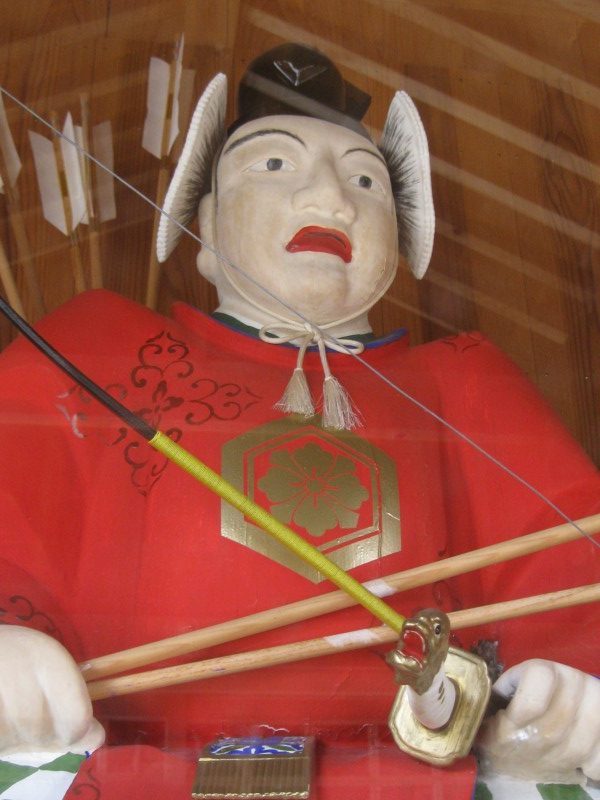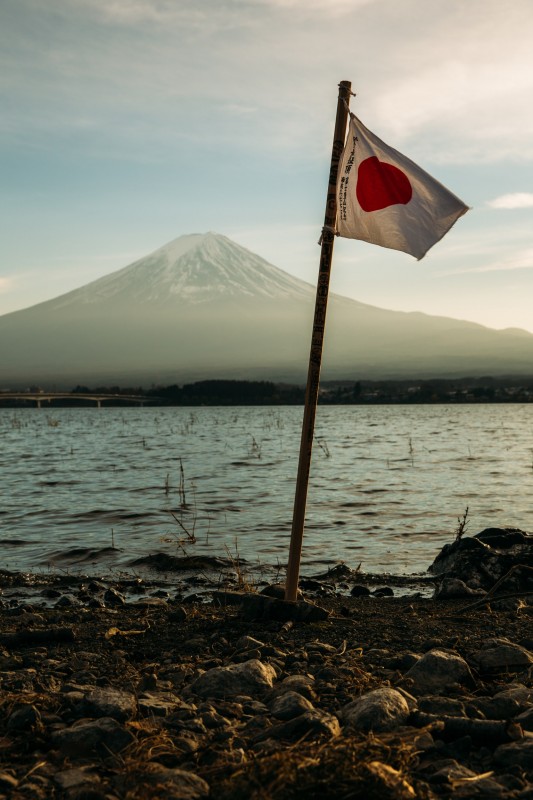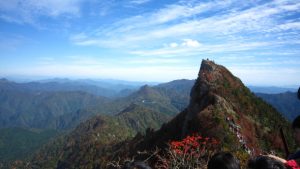This lengthy and state-of-the-art article not only surveys six different academic works, but presents an overview of the current state of Shinto studies worldwide. In doing so, it shows the attention that Shinto has won in the past 30 years. When I first came to Japan, there was but a single book available on the topic – Sokyo Ono’s Shinto: The Kami Way. The book was first published way back in 1962. which is an indiction in itself of how little interest there was. Now, by contrast, there is a virtual flood of new books…
Writing on H-Japan (11/17/2017) Ross Bender comments: “This tour de force by Jolyon Thomas comprises the most comprehensive and up-to-the-minute scholarly overview of Shinto studies in English to appear in any academic publication or online platform anywhere.”
***********
Big Questions in the Study of Shinto
by Jolyon B. Thomas (Assistant Professor of Religious Studies at the University of Pennsylvania)
Review of Breen, John; Teeuwen, Mark, A New History of Shinto and Hardacre, Helen, Shinto: A History and Scheid, Bernhard, ed., with Kate Wildman Nakai, Kami Ways in Nationalist Territory: Shinto Studies in Prewar Japan and the West and Takenaka, Akiko, Yasukuni Shrine: History, Memory, and Japan’s Unending Postwar and Teeuwen, Mark; Breen, John, A Social History of the Ise Shrines: Divine Capital and Zhong, Yijiang, The Origin of Modern Shinto in Japan: The Vanquished Gods of Izumo. H-Japan, H-Net Reviews. November, 2017.
************
If in a previous generation it was an interest in Zen that brought students to classes on Japanese religions, today that topic is often Shinto. Two major sources of information put Shinto in the minds of our students. On the one hand, Japanese popular culture products pique student curiosity about shrines, kami, and associated myths and rituals. The 2016 anime smash hit Your Name. (Kimi no na wa.), for example, features a female protagonist who works as a shrine maiden (miko) in a rural shrine, and several recent televised anime series, such as Red Data Girl and Noragami, feature shrines and kami.Entertainment websites report on tidbits related to shrines and popular media, including a job advertisement for a shrine maiden who will perform memorial services for used plastic figurines in geek mecca Akihabara, a feature on shrine maiden bikinis, and the promotion of a January 2016 visit of Star Wars: The Force Awakens voice actors and droid star BB-8 to Akagi Shrine in Tokyo to celebrate the box office success of that film.[1] Online fan communities discuss how particular anime series might be related to Shinto, with all of the inaccurate claims and stereotyped depictions one might expect.
On the other hand, Shinto is very much in the news. Regional and domestic debates over the controversial Yasukuni Shrine, proposed changes in protocol regarding imperial succession, and the prospect of constitutional revision have ensured that Shinto has stayed in popular consciousness, especially in East Asia but also farther afield. Prime Minister Abe Shinzō hosted the May 2016 G7 summit at Ise-Shima and had world leaders participate in a tree-planting ceremony near the Ise Shrines. Reportage on the scandals swirling around Abe’s administration (particularly the controversial land deal to Osaka-based education company Moritomo Gakuen) and on the political lobbies supporting his initiatives has often made obligatory reference to Shinto, describing it as “a polytheistic and animist religion native to Japan.”[2]
Undergraduates who take courses on East Asian history, politics, and religion come to class with preconceptions that reflect these mediated and popularized depictions of Shinto traditions. The time is therefore ripe for scholars of Japan to build on students’ intrinsic interest in Shinto while also offering more nuanced historical and social context than students are likely to get from the entertainment, news, and social media with which they are probably most familiar.
Fortunately, the academic study of Shinto is presently flourishing, and teaching a robust and engaging course on Shinto is probably easier than it ever has been. Bloomsbury Press recently inaugurated a Shinto Studies series that has already produced a number of excellent studies. Online initiatives like the Digital Museum maintained by Kokugakuin University and the Hachiman Digital Handscrolls maintained by Heidelberg University provide access to digital copies of images, videos of shrine rituals, and readable translations of primary and secondary sources.[3] For several years the International Shinto Studies Association promoted undergraduate research by sponsoring an annual essay competition (the competition has been discontinued; I hope that it will be revived), and recent symposia at UC-Santa Barbara and the University of Pennsylvania have introduced new audiences to the exciting world of Shinto studies.
With the foregoing trends in mind, in this essay I review six recent publications on Shinto. The books collectively interrogate several important questions that are central to the field of religious studies: How can we define Shinto to account for claims that it both is and is not religion? What does the Shinto-as-non-religion idea offer to the comparative study of secularisms and secularities? What is the relationship between religion and politics, and how does that relationship change under uneven relationships like colonialism and military occupation? What is the relationship between religion and indigeneity, and whose politics are served by claiming indigenous status? What is the relationship, if any, between local shrine festivals and imperial household rites, and what do recent debates about imperial succession mean for Shinto writ large? How can we account for shifting ritual practices like anime fan pilgrimage, digital shrine visits (netto sanpai), and the practice of Shinto outside of the archipelago?
Clearly, many of these questions about religion are also central to the field of Japanese studies and the discipline of history. The study of Shinto raises fundamental questions about how the boundaries of Japan can be drawn, and comparing different attempts to isolate Shinto in the past can be an exercise in learning how the historical method works. Accordingly, I have organized my review of these six books by pairing them into twos under the framework of three such fundamental questions: what is history, what is religion, and what is a place? The apparent simplicity of these “big questions” belies the complexity that students and researchers encounter in trying to answer them.
What Is History? Finding “Shinto” in the Past
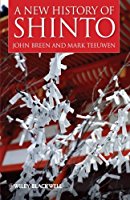 Although two books under review here both describe themselves as histories and both aim for relatively comprehensive coverage, their approaches are tremendously different. One focuses on discontinuity and rupture through the concept of “Shintoization” and the premise that Shinto is a construct (Breen and Teeuwen 2010, p. ix); the other emphasizes continuity over time by focusing on kami as objects of veneration “from earliest times” (Hardacre, p. 1). Helen Hardacre’s Shinto: A History posits a transhistorical phenomenon that, while not necessarily being “Shinto” in name across Japanese history, is indisputably connected to the practices that bear that name today. John Breen and Mark Teeuwen, by contrast, steadfastly refuse to retroject the word “Shinto” onto the past. What we now call “Shinto,” they argue in A New History of Shinto, has been constructed by specific interest groups pursuing particular political and economic agendas.
Although two books under review here both describe themselves as histories and both aim for relatively comprehensive coverage, their approaches are tremendously different. One focuses on discontinuity and rupture through the concept of “Shintoization” and the premise that Shinto is a construct (Breen and Teeuwen 2010, p. ix); the other emphasizes continuity over time by focusing on kami as objects of veneration “from earliest times” (Hardacre, p. 1). Helen Hardacre’s Shinto: A History posits a transhistorical phenomenon that, while not necessarily being “Shinto” in name across Japanese history, is indisputably connected to the practices that bear that name today. John Breen and Mark Teeuwen, by contrast, steadfastly refuse to retroject the word “Shinto” onto the past. What we now call “Shinto,” they argue in A New History of Shinto, has been constructed by specific interest groups pursuing particular political and economic agendas.
These scholarly differences of opinion offer ready-made lessons for students. I can easily imagine pairing chapters of the two books to show students that undeniable erudition can lead to different, if not entirely incommensurable, conclusions. Reading the introductions alongside one another would be a fascinating lesson in itself, especially if juxtaposed with Inoue Nobutaka’s introduction to the 2003 volume Shinto: A Short History.[4] Such a lesson is not simply about how to define Shinto; it also prompts students to think about the nature of the historical method.
While Shinto in contemporary Japan exists as a discrete religion with designated sanctuaries and an official clergy, the tradition is notoriously difficult to pin down. Depending on who speaks for or about it, Shinto may appear as an ancient folk tradition of personal prayers and communal festivals, as a nonreligious tradition of civic rites and moral orientations centered on the imperial house, or as a universal religion with ethical teachings. Confronting this ambiguity, Breen and Teeuwen begin A New History of Shinto “by setting aside the abstract notion of Shinto” based on what they see as “the need to draw a historical distinction between the concept of Shinto on the one hand, and the social reality of kami, shrines, rites, and myths on the other” (p. 221).
Of all the books discussed here, A New History of Shinto reads the most like a textbook and is probably the easiest to use on its own in the classroom (it is short and comparatively cheap). Breen and Teeuwen describe historical moments and geographic locales where Shinto has come into being due to the actions of particular interest groups, a process they describe as “Shintoization.” Three core chapters (3, 4, and 5) provide concrete examples of Shintoization through specific cases (the Hie Shrine as a Shinto site, the story of Amaterasu and the rock cave as a Shinto myth, and the imperial accession rite Daijōsai as a Shinto ritual). Chapter 2 outlines in general terms the nature of kami shrines, myths, and rituals in premodern times; chapter 6 critically discusses the postwar attempts of the Jinja Honchō to make the Ise and Yasukuni Shrines “public.”
What makes this history “new”? Breen and Teeuwen are at pains to contrast their approach with essentialist accounts that posit Shinto as a transhistorical phenomenon that forms the core of Japanese culture. In this sense, they build on Kuroda Toshio’s seminal 1981 essay “Shinto in the History of Japanese Religion” and Teeuwen’s own 2002 elaboration on Kuroda’s thesis, which argues that while kami veneration clearly has ancient origins, “Shinto” as a concept did not come into being until the fifteenth century writings of Yoshida Kanetomo (1435–1511).[5] Together, Breen and Teeuwen argue quite persuasively that thinking in terms of “Shintoization” allows us to see the moments when “Shinto” emerged as a result of the discursive moves and political machinations of specific interest groups. The approach retains Kuroda’s critique of the essentialist claims that would posit Shinto as the unbroken essence of Japanese culture, but it also nuances Kuroda’s stance by treating the independent historical existence of shrines, myths, and kami rituals seriously. Whereas Kuroda wanted to relegate Shinto to a continental import or a minor variant of Buddhism, Breen and Teeuwen show that Shinto is indeed “real,” but only insofar as it has been made so by historical actors.
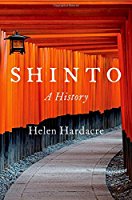 At nearly seven hundred pages, it is difficult to think of any adjective other than “magisterial” to describe Hardacre’s new survey on Shinto. It is also difficult to think of a book that would use much of the same primary and secondary source material mobilized by Breen and Teeuwen to draw such different conclusions. While Hardacre also builds on the Kuroda thesis debunking the notion of Shinto as Japan’s timeless indigenous tradition, her claim that Kuroda may have been too successful in convincing others that Shinto is a late medieval or early modern invention gives an indication of how her project is pitched relative to the constructivist work of scholars like Breen and Teeuwen and Yijiang Zhong (2016, described below). Hardacre acknowledges that Shinto did not come into existence as a discrete concept until the fifteenth century, but she sees continuity in Kami worship (she capitalizes, and does not italicize, the word throughout) across Japan’s long history. Her primary reasoning behind this claim is that the Jingikan (Bureau of Divinities) maintained a more or less stable presence in Japanese public life from the seventh century down to the present (she sees the early twentieth century Jinja Kyoku, the wartime Jingiin, and the postwar Jinja Honchō as the Jingikan’s modern successors).
At nearly seven hundred pages, it is difficult to think of any adjective other than “magisterial” to describe Hardacre’s new survey on Shinto. It is also difficult to think of a book that would use much of the same primary and secondary source material mobilized by Breen and Teeuwen to draw such different conclusions. While Hardacre also builds on the Kuroda thesis debunking the notion of Shinto as Japan’s timeless indigenous tradition, her claim that Kuroda may have been too successful in convincing others that Shinto is a late medieval or early modern invention gives an indication of how her project is pitched relative to the constructivist work of scholars like Breen and Teeuwen and Yijiang Zhong (2016, described below). Hardacre acknowledges that Shinto did not come into existence as a discrete concept until the fifteenth century, but she sees continuity in Kami worship (she capitalizes, and does not italicize, the word throughout) across Japan’s long history. Her primary reasoning behind this claim is that the Jingikan (Bureau of Divinities) maintained a more or less stable presence in Japanese public life from the seventh century down to the present (she sees the early twentieth century Jinja Kyoku, the wartime Jingiin, and the postwar Jinja Honchō as the Jingikan’s modern successors).
Two leitmotifs run throughout Hardacre’s book, albeit with differing degrees of emphasis in each chapter. The first is the question of whether Shinto is indeed “indigenous.” This seemingly straightforward question is much more complex than it first appears, and other scholars have already pointed out the foreign roots of Shinto’s seemingly “local” attributes.[6] The question of indigeneity is, of course, a question of how Japan has been positioned against foreign “others,” and it is difficult to think about the emergence of “Shinto” as a concept without the existence of non-Japanese foils. For example, the threat of Mongol invasions in the thirteenth century spurred new thinking about Japan as a divine land (chap. 5), while the American-led Allied Occupation of Japan (1945–52) had lasting influence on postwar understandings of Shinto (chap. 14).
The second theme concerns how Shinto has figured in the balance of public and private throughout Japanese history. This is essentially a question of whether Shinto is best understood as religion or as politics, although of course these modern categories do not necessarily apply neatly to premodern situations. Here Hardacre’s decision to focus on the Jingikan as the center of Shinto doctrine and practice from the seventh century to modern times makes a good deal of sense, although at times it lends the impression that she prefers “official” or “imperial” Shinto to other forms. This top-down approach is balanced by chapters dealing with Shinto at the grassroots, including chapter 6 (“Medieval Shinto and the Arts”), chapter 9 (“Edo-Period Shrine Life and Shrine Pilgrimage”), chapter 10 (“Shinto and Revelation”), and chapter 15 (“Shrine Festivals and Their Changing Place in the Public Sphere”) on a local community festival in Fuchū City. While these “bottom-up” chapters seem more likely to stray from Hardacre’s heuristic rubrics of indigeneity and the public/private distinction, several of them demonstrate her deep knowledge of popular traditions. Chapter 10, on Shinto-derived “new religions,” is particularly strong in this regard and builds on Hardacre’s earlier work on Kurozumikyō (Kurozumikyō and the New Religions of Japan ([1988]).
Through her chosen leitmotifs, Hardacre problematizes several longstanding presuppositions about Shinto, namely, that Shinto is necessarily a “private” religion or a “public” civic creed, that Shinto is necessarily “Japanese,” and that Shinto had no independent existence from Buddhism until the fifteenth century or later. The first two points are counterintuitive for the uninitiated but are relatively uncontroversial among most experts in the field today; the third point is a major departure from most of the other books reviewed here and will no doubt serve as fodder for some genteel scholarly disagreement. Hardacre’s reasoning on this third point is indisputably sound in one crucial respect: while conceptions of kami have clearly changed over time, there is a degree of continuity in the institutions and lineages responsible for conducting kami rituals across Japanese history. If we have to give this a name, we might as well call “it” Shinto. So far, so good, although whether we are talking about one tradition or several is an open question. But one frustrating quality of Hardacre’s otherwise impressive work lies in her frequent treatment of Shinto itself as an agent and, confusingly, her regular retreat into the passive voice when describing historical events. These two rhetorical tendencies obscure the important questions of who gets to define Shinto and with what political effects. Additionally, Hardacre often attributes to historical figures attitudes or desires that simply cannot be proven with the evidence she provides (many of these historical agents go unnamed, making attribution of psychological dispositions to them even more difficult). On page 97, for example, she argues that combinations of Buddhist divinities with sites for kami worship “developed in response to a desire to discover how the Kami and Buddhist figures were related,” a claim that cannot be proven in the absence of more historical evidence. Similarly, on page 407 she argues that the “bureaucratic focus on ‘shrines’ rather than ‘Shinto’ [in the imperial period] resulted from fear of contradicting the constitution’s provisions for freedom of religious belief.” Many government officials were indeed circumspect in their language use in the early twentieth century because of the way that “religion” appeared in constitutional law and government policy, but to describe this as an attitude of “fear” or to attribute to officials a manipulative attitude is to play fast and loose with the historical record. Some probably were so cynical, but to prove it we would need more documentation than Hardacre provides.
This critique aside, Hardacre’s book includes a wealth of information that one simply cannot find in any other text on Shinto. While some undergraduates might struggle with such a weighty and detailed tome, many of the chapters are must-reads in any course on Shinto. The chapter on shrine festivals and their changing place in the public sphere (chap. 15), for example, is a stellar example of how ethnographic research can elucidate the complicated, ongoing process of negotiation between local communities and shrines. The concluding chapter (chap. 16) on what Hardacre calls “Heisei Shinto” includes treatment of Shinto in popular media and discussion of some of the most striking political debates over Shinto in the last three decades. Chapter 4, on Shinto during the middle and late Heian period, includes a compelling explanation of not only how aristocratic elites came to use the Great Purification Rite formerly monopolized by the Jingikan for personal ends but also how changes in conceptions of kami (as arbiters of morality or as extensions of Buddhist divinities) took place in response to the shifting balance of the “public” and “private” nature of kami ritual. A brief discussion of the problematic nature of the concept of syncretism in that chapter segues into a concluding section in which Hardacre offers the strongest defense of her emphasis on the centrality of the Jingikan to Shinto.
As the single most comprehensive book on Shinto, Hardacre’s book is a must-read. Opinions will vary as to whether all of her historical claims hold up under scrutiny, but her focus on the problems of indigeneity and the public/private distinction move the field forward considerably.
What Is Religion? Taking the Nonreligious Quality of Modern Shinto Seriously
The question of Shinto’s status as a religion and its relation to politics has caused endless concern, confusion, and critique. One monograph and one edited volume shed considerable light on this vexing problem. Yijiang Zhong’s genealogical approach shows that the creation of modern shrine rites as nonreligious civic ritual took place only through a distinction between “religion” and “politics” that was itself premised on a theological distinction between “official” and “unofficial” deities in the Shinto pantheon. Contributors to Bernhard Scheid’s edited volume Kami Ways in Nationalist Territory collectively interrogate the conceptual distinctions and academic approaches that allowed for shrine rites to appear in Japanese law separate from the category of religion; they tie these intellectual tendencies to the concept of nationalism both within and outside of Japan.
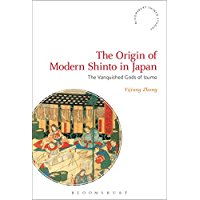
Zhong’s new book persuasively shows that there are many stories to tell about Shinto, and not all of them would position Amaterasu, Ise, and the imperial household at the center of Japanese public life. Rather than focusing on the mythology that prioritizes the legitimacy of the imperial house, Zhong reads past this “official” Shinto to focus on the lineage dedicated to Ōkuninushi and the Izumo Shrine (located in present-day Shimane Prefecture). Like Nancy K. Stalker’s work on Ōmotokyō as an “alternative Shinto” in Japan’s imperial period (Prophet Motive: Deguchi Onisaburō, Oomoto, and the Rise of New Religions in Imperial Japan [2008]), Zhong’s book shows that modern Shinto has never just been the official cult of the Japanese state.
I read Zhong’s work as a series of decentering moves, with each chapter dislocating a putative “center” of Shinto (Ise, the imperial house, Japan) and replacing it with a more nuanced account of the alternative Shintos that have existed throughout Japan’s long history (his account runs roughly from the beginning of the seventeenth century to the middle of the twentieth). He starts by showing that competition between priestly lineages at the Kitsuki Taisha (later known as Izumo Shrine) led to the reconfiguration of the site as a “Shinto” institution in the mid-seventeenth century. In battles over customary rights and political favor, the two lineages came to “purify” their traditions and position them as essentially “Shinto.” This process accelerated as the Tokugawa shogunate promulgated anti-Christianity edicts that established denominational distinctions in law; Zhong also shows that Izumo priests were able to successfully make the claim that Ōkuninushi was the only deity in Japan unambiguously associated with “pure” Shinto and not adulterated by Buddhist influence. This claim directly challenged the primacy of Ise and the imperial deity Amaterasu, who was still understood as a manifestation of the cosmic Buddhist deity Mahavairocana.
The massive pilgrimages to Ise that famously took place throughout the Tokugawa period had put into my mind that veneration of Amaterasu was particularly strong from the seventeenth through the nineteenth centuries. Breen and Teeuwen’s Social History of the Ise Shrines (discussed below) shows that my understanding was not incorrect, but Zhong persuasively demonstrates in chapter 2 that it was Ōkuninushi, not Amaterasu, who received the lion’s share of popular attention during that time. This was based on a doctrine strategically generated by priestly lineages serving the shrine claiming that deities gathered at Izumo in the tenth lunar month to discuss marriages (en musubi). Their decision to conflate Ōkuninushi with the fortune deity Daikoku (one of the Seven Lucky Gods, or shichifukujin) also helped to boost the deity’s popularity, providing yet another challenge to Amaterasu’s authority.
Chapter 3 in particular is an impressive argument that shows that modern Shinto came into being in response to external pressures and that National Learning (kokugaku) was inherently a response to the influx of Catholicism, Western astronomy and calendrical practices, and incursions from Russia to the north.[7] Zhong focuses on the figure of Hirata Atsutane (1776–1843) and his 1811 book True Pillar of the Soul, which positioned Ōkuninushi as a cosmic deity with control over death and the afterlife; the book also rendered Shinto as a native epistemology that could hold its own in competition with foreign modes of knowledge. In Atsutane’s rendering, Shinto became an indigenous tradition associated first and foremost with the terrestrial Ōkuninushi, while the solar deity Amaterasu assumed secondary status. Hirata’s disciples and Izumo priests rushed to disseminate the new doctrine throughout Japan even as political trends were shifting toward the “restoration” of the emperor to direct rule and the concomitant elevation of the imperial cult of Amaterasu. Despite his popularity, Ōkuninushi would eventually be eclipsed by the sun goddess.
Chapter 4 traces the historical factors that led to the Enshrinement Debate (saijin ronsō) of 1880. This dispute over the relative positions of specific deities in the Shinto pantheon has received brief attention in a number of other studies in English, but until now had not received the care that Zhong gives it here.[8] This is part of a broader project, continued in chapter 5, in which Zhong attempts to trace the ways that the modern Japanese state articulated the religion/secular distinction: by ultimately relegating Ōkuninushi to the realm of “private” religion while elevating Amaterasu to the status of “public” imperial progenitor, Japan’s bureaucrats created a religion/secular distinction that was one of the markers of a “civilized” modern nation. The distinction between “nonreligious” shrine rites and “religious” veneration of specific deities that resulted from the Enshrinement Debate had astounding repercussions for Japanese political and religious life. Zhong’s conclusion traces some of those repercussions; they also feature in a volume on Shinto and nationalism edited by Bernhard Scheid with the help of Kate Wildman Nakai.
For quite some time scholars rejected out of hand the imperial Japanese state’s claim that shrine rites were not religious. This rejection derived from an understandable reluctance to legitimate the militarist ideology and draconian policing that characterized the interwar and wartime periods, but it also reflected a tendency in the field of religious studies to identify as religions practices that might otherwise be understood as civic ritual. Taking the idea of nonreligious Shinto seriously is a natural extension of some of the theoretical advances made in secularity studies in the last two decades (discussed below); it also opens up new ways of understanding “State Shinto.”
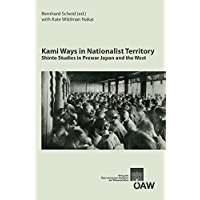
What would a nonreligious Shinto look like? The contributors to the volume collectively focus on what Scheid calls the “nonreligious-shrine doctrine” and how it was theorized in government initiatives and in various branches of Shinto studies within and outside of Japan, including in European countries such as France and Germany. Space does not permit coverage of all of the chapters, so in lieu of an exhaustive summary I will discuss three general themes of the book.
The first theme is the religion/secular distinction, which appears most extensively in Isomae Jun’ichi’s chapter and Scheid’s introduction. As in his other work, Isomae treats the category of religion (and its twin concept, the secular) as a foreign imposition to which Japanese people were forced to respond, first in the Meiji era when it was initially enshrined in law and then again during the Allied occupation (1945–52). Yet as several scholars (including Zhong) have shown, while the category “religion” may not have been native to Japan, Japanese agents were quick to deploy it in service of their parochial agendas.[9] Indeed, tracing how the religion/not-religion distinction played out is precisely Isomae’s objective in the balance of his chapter, in which he argues that fluctuating interpretations of “religion” during the prewar and wartime period did not mesh easily with the “Shinto-as-religion” interpretation that came to dominate in the wake of the war. Some historians of Japan, such as Carol Gluck and Sheldon Garon, will quibble with Isomae’s focus on the “tennō system” as the unutterable and unquestioned ideological center of prewar and wartime Japanese life (historians of Japan long ago rejected the “emperor system” model as excessively simplistic), but his point about the conceptual and legal problems engendered by the protean religion/secular divide will stand.[10]
The second theme is the role of humanistic scholarship in constructing Shinto as unambiguously “religious.” Hayashi Makoto traces the academic division of labor between the fields of religious studies, Buddhist studies, Oriental studies, and Shinto studies that took place in two periods bookended by war: the period between the First Sino-Japanese War and the First World War (1894–1918), and the period between the end of the First World War and the end of the Asia-Pacific War (1918–45). In these periods, new ways of organizing the academy spurred fresh approaches to parsing the relationship between religion and not-religion; problems associated with the management of colonial and metropolitan shrines also fostered novel developments in understandings of mythology and the origins of shrines (topics addressed in chapters by Hirafuji Kikuko and Endō Jun). Additionally, international intellectual trends related to the study of comparative religions, anthropology, and national essence appear in the chapters by Jean-Pierre Berthon, Michael Wachutka, and Bernhard Scheid.
Finally, Nakai’s chapter on how Sophia University negotiated compulsory shrine visits for students is an example of the sort of rigorous historical research that can be done when scholars focus attention on moments of conflict between stakeholders invested in the definitions of shrine rites, Shinto, and religion. Rather than portraying compulsory shrine visits as a simple example of government oppression or a violation of the constitutional guarantee of religious freedom (this is Hardacre’s claim in her book on page 421), Nakai traces a complicated series of negotiations between the military, Sophia University, the Ministry of Education, and the Catholic Church. Nakai shows that these various parties weighed in on the shrine visit issue until it was resolved to mutual dissatisfaction. The ultimate decision to render shrine rites as nonreligious expressions of patriotism was a pragmatic solution to a problem that would have otherwise seen the viability of both Sophia University and the Catholic Church in Japan severely attenuated.
What Is a Place? Site-Specific Studies Help Us Locate “Shinto”
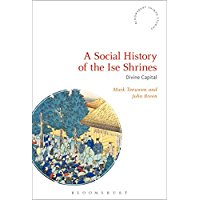
Nakai’s chapter highlights how the seemingly simple act of paying reverence at shrines can be tremendously complicated and subject to wildly different interpretations. Her approach builds on several site-specific studies that have collectively shown how “Shinto” has been made and remade by particular agents pursuing parochial agendas.[11] Along with Zhong’s detailed treatment of the Izumo Shrine in his book, volumes on Ise by Breen and Teeuwen and on Yasukuni by Akiko Takenaka extend this line of inquiry.
According to Teeuwen’s prologue to this text, the authors wrote it as a way to fill the “Ise-shaped hole” in the account they offered in their New History (p. vii). But the “Shintoization” paradigm seen in the 2010 book also features here, with Breen and Teeuwen focusing on historical moments when specific agents laid claim to Ise, redefined its doctrines, and tried to monopolize its considerable economic resources.
Conveniently, the authors lay out a summary of their history in the concluding chapter, showing that Ise underwent at least eight distinct phases of development: 1) a period of “imperial isolation” in which the court and the Ōnakatomi lineage developed a cult of Amaterasu at the site from the seventh to tenth centuries as a way of managing a deity deemed personally dangerous to emperors; 2) a system of “garden estates” from the eleventh to thirteenth centuries in which priests managed shrine lands and reconfigured Ise in a Buddhist idiom as the palace of King Yama; 3) an “esoteric” period from the twelfth to fourteenth centuries in which Amaterasu newly appeared as Japan’s Buddhist protector deity in response to military threats from outside the archipelago; 4) a period from the fourteenth to the sixteenth century when Ise became a famous pilgrimage site due to the promotional activities of oshi (“masters of prayer rites”) and their contractual relationships with patrons in the provinces; 5) a period from the seventeenth century until 1868 when Ise appeared as a “Shinto” institution and the Ise deity featured as part of a set of protective martial deities including Hachiman and Tōshō Daigongen (the deified Tokugawa Ieyasu, 1542–1616) while the pilgrimage business boomed; 6) the Meiji era in which the former dominance of the oshi and mass pilgrimage were eclipsed by the state’s recoding of Ise as an imperial mausoleum; 7) an imperial period from 1912 to 1945 in which educators, journalists, and the modern priesthood promulgated the Ise cult through textbooks and amulet distribution campaigns; and 8) a postwar period in which Ise has now come to rely on private donations (particularly from big business) since its forcible privatization under occupation reforms. In this last period, the Jinja Honchō (established in February 1946) tried various measures, such as amulet distribution campaigns and experimentation with environmentalist language, to bind Japan’s citizens more closely to Ise.
While Breen and Teeuwen’s book is filled with a wealth of detail, the book is a lively read. This is partially due to the fact that conflict makes for good stories. Throughout, the authors focus on how various interest groups vied for land, honor, and customary rights. They also show how infrastructural changes (the position of a brothel, the construction of a railroad) led to changes in ritual practice and doctrine. Most important, they show that while some configuration of significant buildings has occupied the vicinity of the current Ise shrines since the seventh century, understandings of those buildings, interpretations of the deities they housed, and perceptions of the shrines’ connection with the imperial house have changed dramatically over time. In some periods, the shrines were in such a serious state of desuetude that we must discount as wholly specious any contemporary rhetoric about Ise as a repository of ancient traditions.
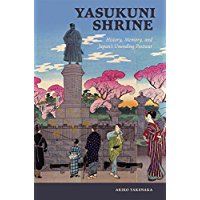
Of the books reviewed here, Takenaka’s book is probably the least concerned with Shinto. Her primary interest is in the politics of memory and competing understandings of history. But it is precisely because of this linkage between a prominent shrine, war memory, and postwar responsibility that her book has salience for Shinto studies. After all, the Yasukuni issue still dominates popular understandings of Shinto, particularly in East Asia but also farther afield.
Takenaka’s careful historical work shows that Yasukuni belief had to be actively constructed and was not necessarily widely held in the years that the shrine was known as Tokyo Shōkonsha (1869–1879); that for the first several decades of its existence Yasukuni the site was primarily a place of entertainment, associated with gaiety and spectacle rather than solemnity; that Yasukuni belief and associated ritual practices spread to other regions of Japan as a result of mass conscription and public school education during the decade between the First Sino-Japanese and the Russo-Japanese wars (1894–1905); that Yasukuni the site came to be a place for carefully staged memorials for the war dead during the Asia-Pacific War, but that these memorials often put the ideological needs of the state above the emotional needs of the bereaved; that Yasukuni the issue has been complicated by the conflicting interests of various parties, all of whom can rightfully claim the right to mourn and all of whom can make constitutionally valid claims regarding religious freedom; and that Yasukuni belief has to be actively constructed today for younger generations who have no actual memory of the war. She closes the book by describing activist groups’ attempts to recode Yasukuni and the associated Yūshūkan Museum by inscribing their own antiwar interpretations on a space that otherwise offers a narrative that celebrates war while lamenting Japanese victimization.
Takenaka’s book is a valuable source for students who come to class seeking tools to understand Yasukuni’s history and ways to evaluate its connection to contemporary political rhetoric and state propaganda. While this will perhaps be most personally relevant for students who hail from East Asia, it is not simply a regional issue. Indeed, her account provides comparative tools for addressing some of the complicated politics of memory in other countries, such as the recent furor over Confederate memorials in the United States. Who counts as an aggrieved party, and who is a victim? Who bears responsibility for assuaging, memorializing, commemorating? What are the politics inherent in these various terms? Does dismantling a memorial solve a problem? The book does not provide definitive answers to these questions, but it shows that Yasukuni has always been more complicated—as a site, as a belief, and as an issue—than most commentators would suggest.
The Present and Future of Shinto Studies
The above comparative review of six recent books on Shinto has demonstrated how the topic of Shinto can be productively used to interrogate such seemingly straightforward concepts as history, religion, and place. In this section I address some ways that these books represent the current state of the field of Shinto studies while also presenting avenues for future research.
Takenaka’s wise decision to disambiguate Yasukuni by thinking of Yasukuni belief, Yasukuni the site, and Yasukuni the issue represents a creative way of addressing one of the thorniest topics in Shinto studies today. Arguably, Yasukuni has received more than its fair share of attention and the time is ripe for more scholarly consideration to be devoted to other sites of major political import. Breen and Teeuwen’s book on Ise and Zhong’s book on Izumo are timely interventions in this regard. Together, all three books show that pilgrimage sites are perennially subject to contestation and competing claims over resources.
One major contribution of these site-specific studies of pilgrimage is that they bring our attention to the concept of “the sacred,” an ambiguous category that begs more rigorous theoretical exploration. Breen’s chapters in the Ise book, for example, seem to assume a hard-and-fast distinction between “sacred” and “secular” aspects of the site. Several of the other books describe shrines and their environs as “sacred space.” But what exactly does this mean? By what criteria is a site designated as “sacred,” and by whom?[12] Such questions are directly related to the religion/secular distinction that appears to varying degrees in all of the books discussed here.
The early 2000s saw major advances in understandings of the relationship between religion and the secular and an explosion of literature on the topic (contributions to the Social Science Research Council blog The Immanent Frame give an impression of the scope of the discussion).[13] Recent publications by scholars of Japanese religions have systematically applied the insights of the recent efflorescence of secularity studies to Japan and to Shinto, but much more remains to be done.[14] This is especially important because our colleagues in secularity studies seem quite eager to learn from the Japanese case.[15] Using Shinto to theorize about the religion/secular distinction not only makes the study of Japanese religions relevant for scholars outside of Japanese studies but also has the salutary effect of bypassing the essentialist claim that Shinto is exclusively “Japanese.”
For example, Zhong argues that the modern Japanese state “should not be understood as a peculiar case in which an irrational and religious form of divine authority was mobilized to justify an authoritarian modern state” but that “the formation of the ambivalent political authority in Meiji Japan was a process galvanized by the imperative to devise and institute the mutually constituting categories of the religious and the secular” (p. 15). Here Zhong moves a step beyond Isomae’s claim in the Scheid volume that the religious/secular distinction was a uniquely “Western” category imposed upon Japan, showing that Japan’s religious modernity was not unique but was rather a manifestation of a broader global trend in which states tried to manage claims to transcendent authority while also policing citizens’ subjectivity.[16]
Recent scholarly debates over when “State Shinto” came into existence, how pervasive and influential “it” was as ideology, and what actual institutional support “it” had in any given period have been inconclusive.[17] Unfortunately, the books reviewed above do not provide consensus on this issue, although the authors tend to agree that the modern Japanese state experimented with several different religion/not-religion arrangements from the start of the Meiji era through the end of the Asia-Pacific War. In his introduction, for example, Scheid points out that for decades scholars treated State Shinto as either “false religion” or “false theology,” but that in actuality State Shinto was not a “perversion of an existing religious faith” but rather “a series of attempts to establish Shinto itself” (pp. 20–21). Zhong’s account of the history behind the Enshrinement Debate offers one story of how the modern Japanese state disambiguated public civic ritual and private religion, while Nakai’s chapter shows through a concrete case how the administrative distinction of “religion” and “not-religion” played out in the early 1930s.
For her part, Hardacre acknowledges some of the problems with the “State Shinto” model and seems to revise the approach taken in her 1989 book Shinto and the State, 1868–1988. She concedes that modern Japan was and remains a secular state in law, but then doubles down on the idea of “State Shinto” by defining it as “Shinto mediation of state-sponsored ideological campaigns” (p. 404). The questions of what constitutes “mediation” and which state initiatives counted as “ideological campaigns” remain vague, however, and Hardacre’s preference for the passive voice makes it difficult to attribute responsibility for particular ideas or actions: Were shrine priests guilty of capitulating to the state, or did bureaucrats manipulate Shinto for nefarious ends? Reality was certainly more complicated than either of these options, but Hardacre seems to favor the latter over the former: “The suppression of Ōmoto qualifies as an example of State Shinto because of the use of state ideology regarding the deified emperor as a means to enforce conformity”; and “the use of shrines in campaigns to force colonial subjects to assimilate is this era’s clearest example of State Shinto” (pp. 423, 432, emphasis added).
Hardacre’s new take on the old concept of State Shinto is convincing insofar as she acknowledges the crucial role played by Japanese scholars of religion in interpreting Shinto as unambiguously “religious,” essentially “indigenous,” and mostly “private.” It was the scholarly portrayal of Shinto and shrine rites as private religion that allowed the concept of public “State Shinto” to emerge. As her chosen themes irrefutably show, the religiosity, indigeneity, and private qualities of Shinto have never been givens. They have only appeared as such because religious studies scholars writing in the early twentieth century were inclined to position Shinto within a received “world religions” paradigm and because some of those scholars of religion happened to enjoy politically influential platforms, particularly during the Allied Occupation of Japan.[18] Future work on the religion/not-religion paradigm in modern Japan must take this intellectual history into account, rejecting the hitherto widespread assumptions that the imperial Japanese state distorted a “pure” religion for nefarious political ends or that nationalist appropriations of religious ideas in contemporary Japanese politics threaten to contaminate a hermetically sealed secular sphere.
The discrepancies between the approaches adopted by Hardacre and Breen and Teeuwen show that serious differences of opinion exist concerning the extent to which we should take the present existence of Shinto as an independent religious tradition as indication that something identifiable as “Shinto” existed in the past. Do we focus on continuity in order to understand how we got to the present, or is it better to identify points of rupture to highlight the contingencies of our own moment? Clearly there are advantages to both.
Whatever one’s preference, the question of periodization equally applies. Changes in the management of shrines have not tracked neatly with conventional periodization, and yet many of the books reviewed here stick to standard historiographic conventions by situating changes in shrines according to standard historical periods (Heian, Kamakura, Edo) and imperial reign dates (Meiji, Heisei). Breen and Teeuwen show that major changes in the management and fortunes of the Ise Shrines have been both dependent on and independent of political shifts at court and in the successive warrior governments of the archipelago, but many of their chapters are organized around traditional time periods. Meanwhile, Hardacre reasonably rejects the idea that “State Shinto” could refer to a historical period, but her decision to title her final chapter “Heisei Shinto” may overemphasize the importance of the imperial house in a period when imperial dominance of Shinto ritual has been attenuated and corporate sponsorship ascendant.
By contrast, Zhong’s decentering story is also necessarily a re-periodizing account. He eschews focus on the periods “Tokugawa” and “Meiji” in favor of breaking up his chapters according to periods that track particular conflicts or intellectual innovations. To my mind this is a much more defensible approach than approaches that plot the story of kami veneration on a timeline graduated by shifts in the high politics of the courtly or warrior governments. Centralized politics have often affected shrines and their priestly lineages but not always directly or immediately. As several of these books show, shrine priests have readily turned to other sources of land and revenue at times when governmental authorities have had other priorities.
On that note, the connection between shrines and their finances remains a point that deserves further elucidation. Hardacre points to the new linkages between big business and Shinto that developed during the imperial period when the loss of state funding meant that shrines had to get creative. Breen and Teeuwen (2017) similarly show how Japanese corporations have become heavily invested in major Shinto rituals (Takenaka also makes a similar point). There nevertheless remains much more to be done on what we might call “corporate Shinto,” especially as corporations serve a mediating function between “public” and “private” that may call into question the strict bifurcation between these terms. As Hardacre implies, the appearance of this “corporate Shinto” precisely during the period traditionally associated with the rise of “State Shinto” deserves further scrutiny (pp. 414, 430).
Hardacre’s discussion of the complex relationships between local communities and shrines also suggests the need for more studies of what might be called “neighborhood Shinto,” or the Shinto of local governing bodies, neighborhood associations, and chambers of commerce. It is these community organizations, after all, that bear the actual responsibility for overseeing annual events like shrine festivals. Hardacre shows that cops, Parent-Teacher Associations, organized crime outfits, and “office ladies” have all played crucial roles in how shrine festivals are conducted; they have also changed longstanding ritual practices (chap. 15). Conflicts between shrine priests and shrine stewards (sōdai, described briefly in chapter 16) also serve as opportunities to investigate how stakeholders have defined “real Shinto.”
As Breen and Teeuwen point out in their discussion of media representations of the vicennial rebuilding of the Ise shrines (see especially chapter 10 of their Social History), there also exists what we might call “mediated Shinto”: the Shinto of newspaper reportage, television specials, and social media. Editorial decisions made by newspapers and television broadcasters in how to comment on imperial succession, the periodic renewal of Ise, or the Yasukuni issue affect how audiences understand Shinto. Popular entertainment media also affect perceptions of Shinto traditions. Shrines appear in television commercials and music videos, and fan devotion has demonstrably changed longstanding pilgrimage practices. For example, the anime series Lucky Star has prompted enough fan tourism to Washimiya Town in Saitama Prefecture to change the local economy, and the shrine festival has featured a portable shrine devoted to Lucky Star characters in recent years.[19] Fan pilgrimage presents a valuable opportunity to see cultic practices at shrines developing in real time, although some would doubtless describe such behavior as “tongue in cheek” and therefore not “really Shinto.” Yet these defining moments and points of contestation are precisely the instances when Shinto is born.
What Isn’t Shinto? The Perennial Purifying Move
As I read these books, I found myself thinking along with Zhong that the old claim that Shinto is essentially a tradition concerned with purity might have more than a kernel of truth to it. By this I do not mean “purity” in the sense of concern with ritual transgressions and the expiation thereof, but rather the doctrinal and political concern with creating and maintaining orthodoxy. The authors of these books may disagree about when Shinto came into historical existence as a concept and about what criteria can be used to isolate “Shinto” in the long history of kami veneration, but Shinto bears an independent existence today precisely because of stakeholders’ purifying attempts to disaggregate kami veneration from Buddhist ritual, Copernican cosmology, or the modern category of religion (to offer just a few examples from the books). Several of the authors trace moments when competing priestly lineages “purified” their tradition as they vied for material and political support from landowners and governments. Others show how bureaucrats sequestered aspects of kami veneration from the potentially destabilizing category of religion even as members of the intelligentsia tried to position Shinto as an unadulterated “ethnic religion” of the Japanese archipelago. Even in the postwar period when Shinto came to be dominated by the Association of Shinto Shrines, serious differences of opinion lingered among association spokespeople about how Shinto might be purified, in some cases from the taint of foreign influence, in others from state control, in still others from the stain of nationalism (Breen and Teeuwen 2010).
It is therefore just as important to ask not only what Shinto is in any given time or place but also who has made claims about what it is not.[20] This entails looking at how stakeholders draw limits around “real Shinto” in specific historical contexts like court cases and legal debates. It requires disaggregating “Shinto” by determining how multiple traditions might happen to share one name. It furthermore necessitates examining how specific interest groups have linked Shinto to other concepts, such as environmentalism or “conventional wisdom.”[21]
I suggested above that studying Shinto can introduce students to the fundamentals of humanistic inquiry. Indeed, teaching with these books is not just good for learning about Shinto. It is also good for helping students sit with uncertainty because they can see how eminent scholars have organized “the facts” in different ways. The books also help students develop sensitivity to historical contingency; their competing interpretations reinforce the value of terminological precision. Precisely because the authors disagree on crucial points, reading them side by side offers valuable opportunities for students to defend their own positions, both in class and in their academic writing.
This is important because students often buy into courses most when they can see scholarly debates happening “in real time” and when they can see how they might also participate in the long, slow conversation that is academic research. The books reviewed here are fantastic resources for introducing students to this aspect of academic craft. The authors disagree productively; their books raise counterintuitive questions provocatively. By juxtaposing sections of these books, instructors can create comprehensive courses on Shinto that reject timeworn essentialist claims (“Shinto is the indigenous animistic religion of Japan”) and reductive functionalist ones (“Shinto is an ideological tool used by warmongering militarists”) in favor of a constructivist focus on who “makes” Shinto by speaking for it and about it.
Notes
[1]. On the shrine maiden job, see K. K. Miller, “Akihabara Shrine Seeks Shrine Maiden to Perform Memorial Services for ‘Deceased’ Anime Figures,” Sora News 24 (March 23, 2016), http://en.rocketnews24.com/2016/03/23/akihabara-shrine-seeks-shrine-maiden-to-perform-memo…. On shrine maiden bikinis, see Oona McGee, “Shinto Shrine Maiden Swimsuit Goes on Sale in Japan,” Sora News 24 (June 7, 2017), http://en.rocketnews24.com/2017/06/07/shinto-shrine-maiden-swimsuit-goes-on-sale-in-japan/. On BB-8’s visit to Akagi Jinja, see Mibu Tomohiro, “Sutā wōzu BB-8 ga Akagi Jinja de gokigan! Kyūto na sugata ni heroin seiyū mo mune kyun” (Januay 28, 2016), https://www.cinematoday.jp/news/N0079883.
[2]. Jake Adelstein and Mari Yamamoto, “The Religious Cult Secretly Running Japan,” The Daily Beast (July 10, 2016), http://www.thedailybeast.com/the-religious-cult-secretly-running-japan.
[3]. Kokugakuin Digital Museum, http://k-amc.kokugakuin.ac.jp/DM/; and Hachiman Digital Handscrolls, http://kjc-sv013.kjc.uni-heidelberg.de/hachiman/#O44115/.
[4]. Inoue Nobutaka, introduction to Shinto: A Short History, by Inoue Nobutaka, Itō Satoshi, Endō Jun, and Mori Mizue, translated and adapted by Mark Teeuwen and John Breen (London and New York: RoutledgeCurzon, 2003), 1-10.
[5]. Kuroda Toshio, “Shinto in the History of Japanese Religion,” trans. James C. Dobbins and Suzanne Gay, Journal of Japanese Studies 7 (1981): 1–21; and Mark Teeuwen, “From Jindō to Shinto: A Concept Takes Shape,” Japanese Journal of Religious Studies 29 (2002): 233–263.
[6]. Michael Como, Weaving and Binding: Immigrant Gods and Female Immortals in Ancient Japan (Honolulu: University of Hawai‘i Press, 2009); and Herman Ooms, Imperial Politics and Symbolics in Ancient Japan: The Tenmu Dynasty, 650–800 (Honolulu: University of Hawai‘i Press, 2009).
[7]. For a similar argument, see Jason Ānanda Josephson, The Invention of Religion in Japan (Chicago: University of Chicago Press, 2012), 94–131.
[8]. Helen Hardacre, Shinto and the State, 1868–1988 (Princeton, NJ: Princeton University Press, 1989), 48–51; and Trent Maxey, The “Greatest Problem”: Religion and State Formation in Meiji Japan (Cambridge, MA: Harvard University Asia Center, 2014), 149–154.
[9]. See Josephson, Invention of Religion in Japan; Maxey, “Greatest Problem”; Isomae Jun’ichi, Religious Discourse in Modern Japan: Religion, State, and Shinto (Leiden: Brill, 2014); and Hans Martin Krämer, Shimaji Mokurai and the Reconception of Religion and the Secular in Modern Japan (Honolulu: University of Hawai‘i Press, 2015).
[10]. See Carol Gluck, Japan’s Modern Myths: Ideology in the Late Meiji Period (Princeton, NJ: Princeton University Press, 1985); and Sheldon Garon, Molding Japanese Minds: The State in Everyday Life(Princeton, NJ: Princeton University Press, 1997).
[11]. Allan Grapard, The Protocol of the Gods: A Study of the Kasuga Cult in Japanese History (Berkeley and Los Angeles: University of California Press, 2002); Sarah Thal, Rearranging the Landscape of the Gods (Chicago: University of Chicago Press, 2005); D. Max Moerman, Localizing Paradise: Kumano Pilgrimage and the Religious Landscape of Premodern Japan (Cambridge, MA: Harvard University Asia Center, 2006); Barbara Ambros, Emplacing a Pilgrimage: The Ōyama Cult and Regional Religion in Early Modern Japan (Cambridge, MA: Harvard University Asia Center, 2008); and Imaizumi Yoshiko, Sacred Space in the Modern City: The Fractured Pasts of Meiji Shrine, 1912–1958 (Leiden: Brill, 2013).
[12]. See Andrew Bernstein’s excellent study, “Whose Fuji? Religion, Region, and State in the Fight for a National Symbol,” Monumenta Nipponica 63 (2008): 51–99.
[13]. Social Science Research Council, The Immanent Frame, https://tif.ssrc.org.
[14]. See Aike P. Rots and Mark Teeuwen, eds., “Introduction: Formations of the Secular in Japan,” Japan Review 30 (2017).
[15]. Jason Ānanda Josephson-Storm, “The Superstition, Secularism, and Religion Trinary: Or Re-Theorizing Secularism”; Charles McCrary, “Superstitious Subjects: US Religion, Race, and Freedom”; Jeffrey Wheatley, “US Colonial Governance of Superstition and Fanaticism in the Philippines”; and J. Brent Crosson, “The Impossibility of Liberal Secularism: Religious (In)tolerance, Spirituality, and Not-Religion,” all in Method and Theory in the Study of Religion (forthcoming 2017).
[16]. I make a similar point in my book manuscript Japan, the American Occupation, and the Problem of Religious Freedom (Chicago: University of Chicago Press, forthcoming).
[17]. Okuyama Michiaki, “‘State Shinto’ in Recent Japanese Scholarship,” Monumenta Nipponica 66 (2011): 123–145.
[18]. On the influential “world religions” rubric, see Tomoko Masuzawa, The Invention of World Religions, Or, How European Universalism was Preserved in the Language of Pluralism (Chicago: University of Chicago Press, 2005). Hardacre and Isomae both briefly discuss the impact of scholars of religion, such as Anesaki Masaharu (1870–1949), Katō Genchi (1873–1965), and Kishimoto Hideo (1903–64) on occupation policies related to religion.
[19]. Yamamura Takayoshi, “Contents Tourism and Local Community Response: Lucky Star and Collaborative Anime-Induced Tourism in Washimiya,” Japan Forum 27 (2015): 59–81.
[20]. See Robert Ford Campany’s must-read article “On the Very Concept of Religion in the Modern West and Medieval China,” History of Religions 42 (2003): 287–319.
[21]. Aike P. Rots, “Sacred Forests, Sacred Nation: The Shinto Environmentalist Paradigm and the Rediscovery of Chinju no Mori,” Japanese Journal of Religious Studies 42 (2015): 205–233; and John Breen, “‘Conventional Wisdom’ and the Politics of Shinto in Postwar Japan,” Politics and Religion 4 (2010): 68–81.
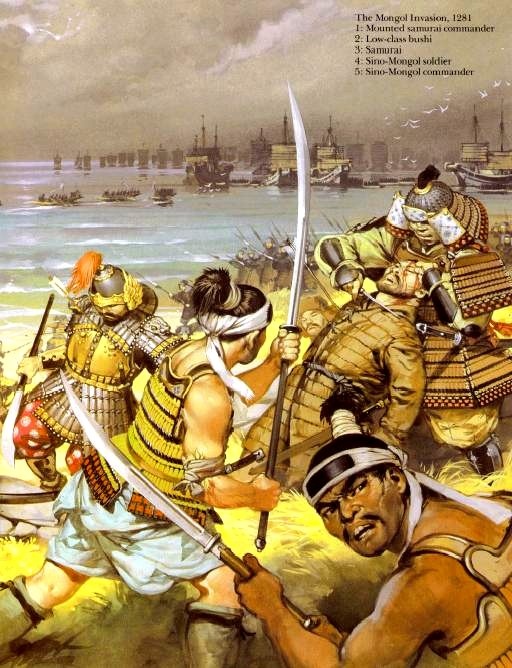

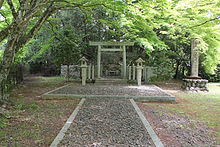

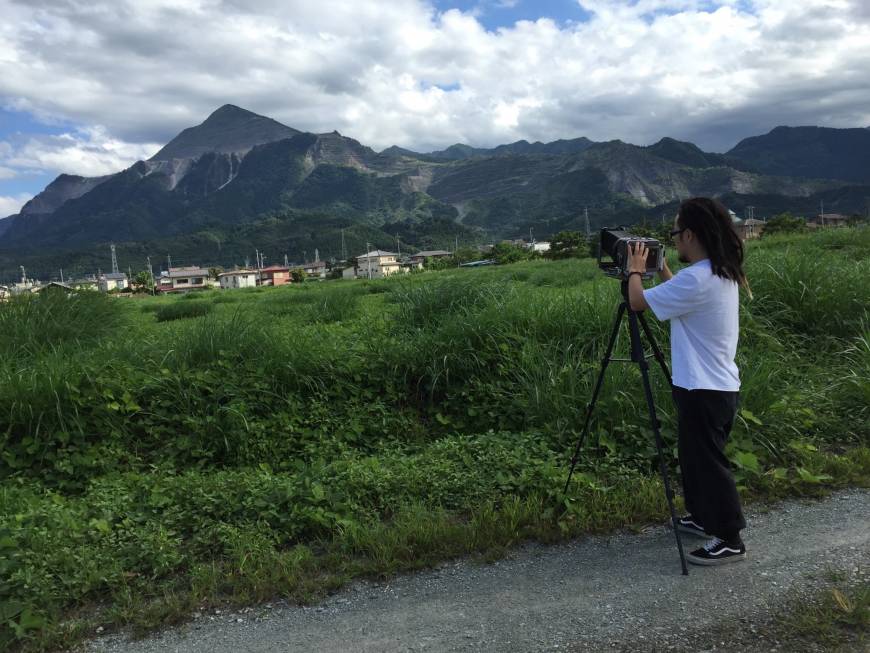
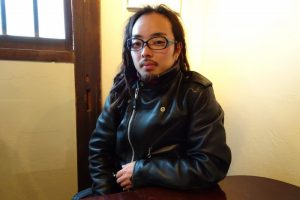
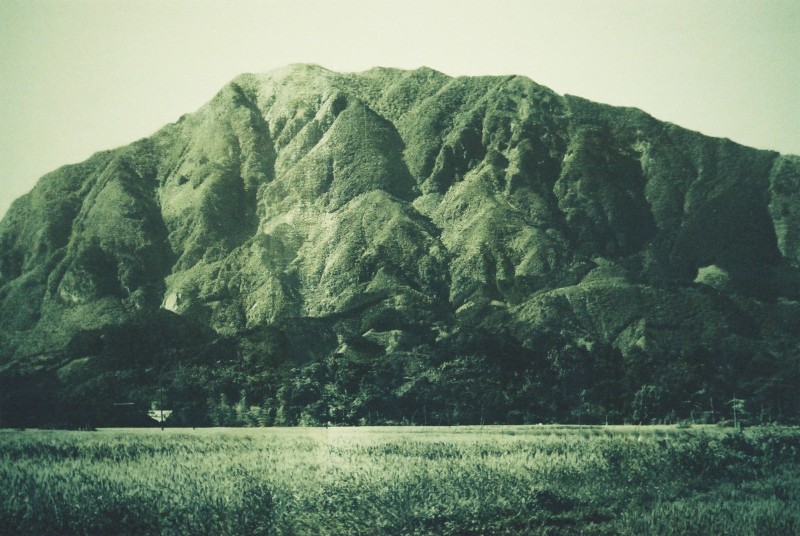
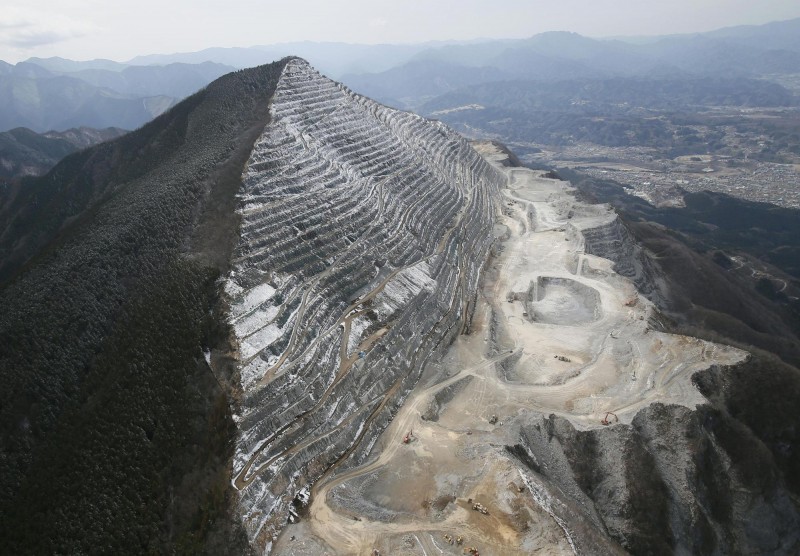
 Although two books under review here both describe themselves as histories and both aim for relatively comprehensive coverage, their approaches are tremendously different. One focuses on discontinuity and rupture through the concept of “Shintoization” and the premise that Shinto is a construct (Breen and Teeuwen 2010, p. ix); the other emphasizes continuity over time by focusing on kami as objects of veneration “from earliest times” (Hardacre, p. 1). Helen Hardacre’s Shinto: A History posits a transhistorical phenomenon that, while not necessarily being “Shinto” in name across Japanese history, is indisputably connected to the practices that bear that name today. John Breen and Mark Teeuwen, by contrast, steadfastly refuse to retroject the word “Shinto” onto the past. What we now call “Shinto,” they argue in A New History of Shinto, has been constructed by specific interest groups pursuing particular political and economic agendas.
Although two books under review here both describe themselves as histories and both aim for relatively comprehensive coverage, their approaches are tremendously different. One focuses on discontinuity and rupture through the concept of “Shintoization” and the premise that Shinto is a construct (Breen and Teeuwen 2010, p. ix); the other emphasizes continuity over time by focusing on kami as objects of veneration “from earliest times” (Hardacre, p. 1). Helen Hardacre’s Shinto: A History posits a transhistorical phenomenon that, while not necessarily being “Shinto” in name across Japanese history, is indisputably connected to the practices that bear that name today. John Breen and Mark Teeuwen, by contrast, steadfastly refuse to retroject the word “Shinto” onto the past. What we now call “Shinto,” they argue in A New History of Shinto, has been constructed by specific interest groups pursuing particular political and economic agendas. At nearly seven hundred pages, it is difficult to think of any adjective other than “magisterial” to describe Hardacre’s new survey on Shinto. It is also difficult to think of a book that would use much of the same primary and secondary source material mobilized by Breen and Teeuwen to draw such different conclusions. While Hardacre also builds on the Kuroda thesis debunking the notion of Shinto as Japan’s timeless indigenous tradition, her claim that Kuroda may have been too successful in convincing others that Shinto is a late medieval or early modern invention gives an indication of how her project is pitched relative to the constructivist work of scholars like Breen and Teeuwen and Yijiang Zhong (2016, described below). Hardacre acknowledges that Shinto did not come into existence as a discrete concept until the fifteenth century, but she sees continuity in Kami worship (she capitalizes, and does not italicize, the word throughout) across Japan’s long history. Her primary reasoning behind this claim is that the Jingikan (Bureau of Divinities) maintained a more or less stable presence in Japanese public life from the seventh century down to the present (she sees the early twentieth century Jinja Kyoku, the wartime Jingiin, and the postwar Jinja Honchō as the Jingikan’s modern successors).
At nearly seven hundred pages, it is difficult to think of any adjective other than “magisterial” to describe Hardacre’s new survey on Shinto. It is also difficult to think of a book that would use much of the same primary and secondary source material mobilized by Breen and Teeuwen to draw such different conclusions. While Hardacre also builds on the Kuroda thesis debunking the notion of Shinto as Japan’s timeless indigenous tradition, her claim that Kuroda may have been too successful in convincing others that Shinto is a late medieval or early modern invention gives an indication of how her project is pitched relative to the constructivist work of scholars like Breen and Teeuwen and Yijiang Zhong (2016, described below). Hardacre acknowledges that Shinto did not come into existence as a discrete concept until the fifteenth century, but she sees continuity in Kami worship (she capitalizes, and does not italicize, the word throughout) across Japan’s long history. Her primary reasoning behind this claim is that the Jingikan (Bureau of Divinities) maintained a more or less stable presence in Japanese public life from the seventh century down to the present (she sees the early twentieth century Jinja Kyoku, the wartime Jingiin, and the postwar Jinja Honchō as the Jingikan’s modern successors).



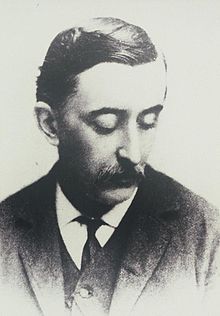 On this day (November 13) in 1894, Lafcadio Hearn published an editorial for the Kobe Shimbun. He’d taken a job there as a journalist following his unhappy spell teaching in Kumamoto. The editorial provides an interesting insight into his view of Shinto and gives the reader much pause for thought.
On this day (November 13) in 1894, Lafcadio Hearn published an editorial for the Kobe Shimbun. He’d taken a job there as a journalist following his unhappy spell teaching in Kumamoto. The editorial provides an interesting insight into his view of Shinto and gives the reader much pause for thought.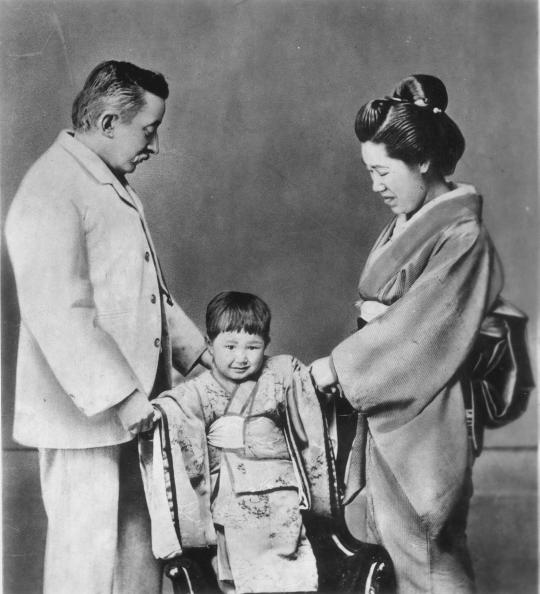
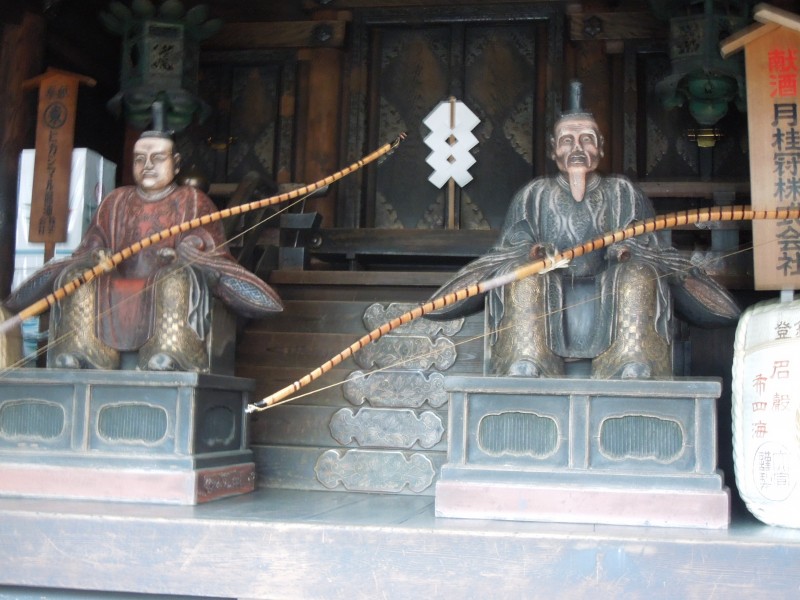 On his shrine outings around the Izumo province near Matsue, Hearn took note of the local folklore, often describing in great detail the history and customs of the area. It’s what made him, in some people’s opinion, one of the founding figures of Japanese folklore. Above all, he was a major influence on the most famous folklorist of them all, Yanagita Kunio. In the passage below, Hearn writes of the Zuijin figures who can sometimes be found at the entrance ways to shrines. (Here in Kyoto the most notable example are those at Yasaka Jinja in Gion, which in Edo times was a prime exemplar of syncretism.)
On his shrine outings around the Izumo province near Matsue, Hearn took note of the local folklore, often describing in great detail the history and customs of the area. It’s what made him, in some people’s opinion, one of the founding figures of Japanese folklore. Above all, he was a major influence on the most famous folklorist of them all, Yanagita Kunio. In the passage below, Hearn writes of the Zuijin figures who can sometimes be found at the entrance ways to shrines. (Here in Kyoto the most notable example are those at Yasaka Jinja in Gion, which in Edo times was a prime exemplar of syncretism.)